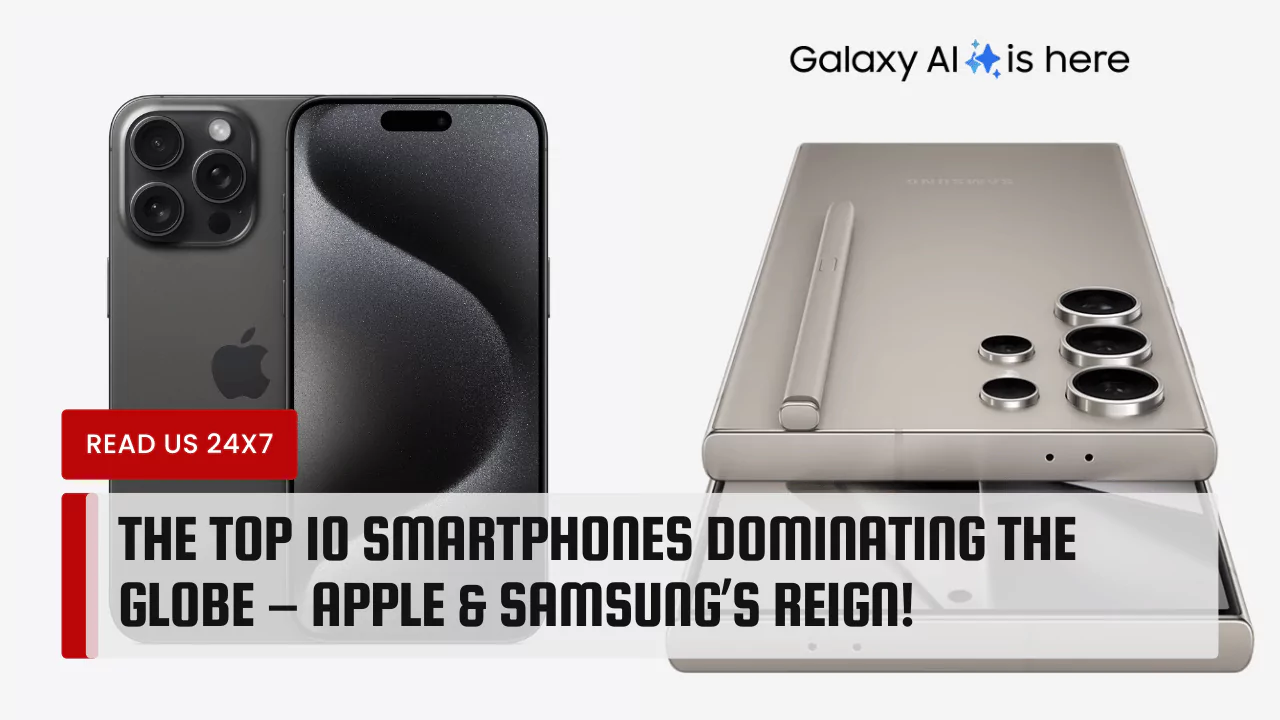In a surprising turn of events, Apple and Samsung completely dominated the top 10 best-selling smartphones list for the first quarter of 2024. This marks a significant shift in the smartphone landscape, leaving no room for other brands in the coveted top spots.
The Apple and Samsung Sales Leaderboard
Q4 2023’s Top 10 Smartphones
Counterpoint Research, a market analysis firm, revealed that Apple stole the show in Q4 2023. The iPhone 14 reigned supreme as the best-selling smartphone, followed closely by its pricier sibling, the iPhone 15 Pro Max. This dominance continued into Q1 2024, with the iPhone 15 Pro Max taking the top spot. Interestingly, Apple captured an impressive seven positions in the top 10 list for Q1 2024. Samsung managed to secure the remaining three spots with their flagship Galaxy S24 Ultra leading the charge.
- iPhone 15 Pro Max: 4.4%
- iPhone 15: 4.3%
- iPhone 15 Pro: 3.7%
- iPhone 14: 1.9%
- Galaxy S24 Ultra: 1.9%
- Galaxy A15 5G: 1.5%
- Galaxy A54: 1.4%
- iPhone 15 Plus: 1.3%
- Galaxy S24: 1.0%
- Galaxy A34: 1.0%
Market Share Dynamics
This brand dominance by Apple and Samsung translates to a significant market share. The combined market share of the top 10 smartphones has reached an all-time high of 20%, highlighting the growing influence of these two tech giants.
Effects on the Smartphone Industry
This news has sent shockwaves through the smartphone industry. The absence of other major players like Xiaomi, Oppo, and Vivo in the top 10 raises questions about the market’s competitiveness. It also suggests a growing trend towards brand loyalty and a consumer preference for established brands.
Innovations Boosting Smartphone Sales
Several key factors are driving the success of Apple and Samsung’s smartphones.
Upgrades in Design and Performance
Both companies are constantly innovating. Apple’s iPhone 15 series boasts improved camera systems, faster processors, and sleeker designs, while Samsung’s Galaxy S24 lineup focuses on foldable displays and powerful multitasking capabilities. These advancements keep consumers interested in upgrading their devices.
The Rise of GenAI and Eco-Friendly Features
Artificial intelligence (AI) is making its way into smartphones in a big way, with features like voice assistants and smarter camera functionalities. Both Apple and Samsung are heavily investing in GenAI (Next-generation AI) for their devices, making them more intelligent and personalized. Additionally, there’s a growing focus on eco-friendly features like improved battery life and the use of recycled materials, which resonates with environmentally conscious consumers.
Consumer Demand Shifts
Consumer preferences are also shifting. There’s a growing demand for premium smartphones that offer a seamless user experience and integrate well with other devices within a brand’s ecosystem. Apple and Samsung excel in providing this integrated experience, further solidifying their positions at the top.
What Lies Ahead for Apple and Samsung?
Growth Opportunities and Market Challenges
Despite their current dominance, both Apple and Samsung face challenges. The smartphone market is nearing saturation, and convincing people to upgrade their existing devices will become increasingly difficult.
However, there are also growth opportunities. Emerging markets like Africa and Southeast Asia present significant potential for future sales. Additionally, the development of new technologies like augmented reality (AR) and virtual reality (VR) could create entirely new product categories and reignite consumer interest.
Emerging Competitors on the Horizon
While Apple and Samsung currently hold the top spots, new players are waiting in the wings. Companies like Google and Huawei are constantly innovating, and with the right strategies, they could potentially challenge the current market leaders.
In conclusion, Apple and Samsung’s complete domination of the top 10 best-selling smartphones list signifies a significant shift in the smartphone industry. This dominance is fueled by continuous innovation, a focus on AI and eco-friendly features, and a strong understanding of evolving consumer preferences. However, both companies cannot rest on their laurels. The future of the smartphone market hinges on their ability to adapt to changing consumer demands, embrace new technologies, and navigate the challenges posed by a maturing market and emerging competitors.



